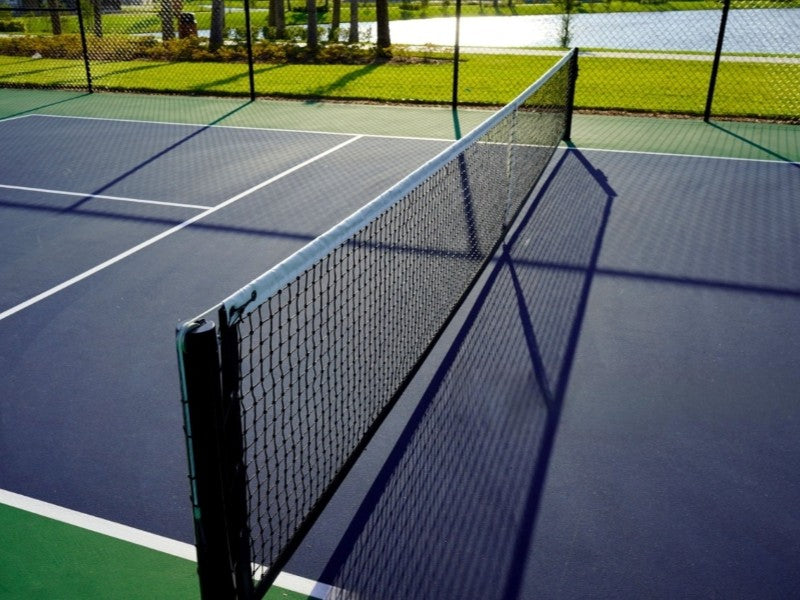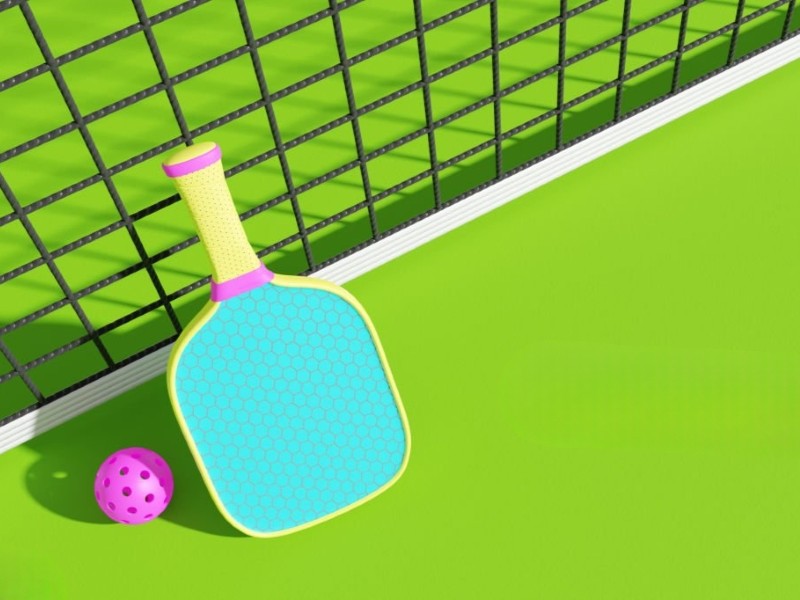Pickleball continues to grow at an incredible pace, and with that growth comes an important practical question for both beginners and facility managers: how much is a pickleball net in 2025? Whether you’re setting up a court in your driveway, managing a community center, or planning a full-scale sports complex, the net is one of the most critical—and variable—investments.
Quick Answer & What This Guide Covers
For readers in a hurry, here are the typical price ranges for pickleball nets in 2025:
- Portable entry-level nets (backyard & casual use): $80 – $150
- Mid-range portable nets (club & league use): $150 – $300
- Premium/tournament portable nets: $300 – $600+
- Permanent in-ground net systems (equipment only): $500 – $2,000
- Fully installed permanent systems (labor included): $1,200 – $3,600
Portable nets dominate the consumer market, offering affordability and convenience. Permanent systems, however, are the choice for schools, municipalities, and private clubs that want a long-term solution.
This guide will break down the factors that influence cost, explain the different categories of nets, and provide a clear buyer’s roadmap. By the end, you’ll know not just how much a pickleball net costs, but also which option makes the most sense for your needs.
What Drives Price? Key Factors That Influence Net Costs
The wide range in pricing isn’t random. Several key components and features directly affect cost:
1. Frame & Material Quality
- Entry-level nets often use thinner steel tubing or lightweight aluminum, which keeps costs down but may sacrifice durability.
- Higher-end nets feature powder-coated steel or reinforced aluminum designed to resist bending, corrosion, and years of outdoor exposure.
- Permanent systems rely on heavy-gauge steel posts anchored in concrete, which drives costs higher.
2. Net & Tension System
- Basic models use simple Velcro straps or bungee cords to maintain tension.
- Premium nets incorporate center straps, advanced locking systems, and regulation-approved designs to ensure the net stays at the correct 34-inch height.
- Longevity and play consistency depend heavily on how well the net holds tension over time.
3. Portability & Mobility Features
- Budget models may require manual assembly and don’t include carrying cases.
- Mid- to high-end systems often fold into rolling bags with wheels for easier storage and transport.
- Commercial-grade rolling bases significantly increase convenience—but also add to the price.
4. Regulation & Official Approval
- Nets that meet USA Pickleball regulations tend to cost more, partly because of design precision and partly due to brand reputation.
- Some clubs require only approved nets, especially for league and tournament play.
5. Installation Complexity
- Portable nets involve minimal setup costs—usually just your time.
- In-ground systems require sleeves, concrete, excavation, and professional installation, which can multiply the final price several times over.
6. Warranty & Brand Reputation
- Reputable brands like OnCourt OffCourt, PickleNet, Franklin, Gamma, and Selkirk often include extended warranties and replacement part availability.
- Cheaper, unbranded imports may save you money up front but can cost more in replacements over time.
7. Accessories & Extras
- Carrying cases, wind straps, replacement nets, or branded add-ons can add $20–$100 or more.
- For permanent installations, optional upgrades like tamper-proof anchors or weatherproof coatings also increase total spend.
Takeaway: If you’re asking “how much is a pickleball net,” remember that the sticker price is only part of the story. Durability, longevity, and ease of use can make a more expensive net the better long-term investment.

Price Breakdown: Typical Buyer Scenarios & Estimated Budgets
To make the cost picture clearer, let’s look at common buyer profiles and the realistic 2025 budgets you should expect.
A. Backyard & Casual Player
- Budget: $80 – $150
- Who it’s for: Families, beginners, or players using driveways, cul-de-sacs, or temporary courts.
- Features: Lightweight steel/aluminum frames, basic tension straps, simple carry cases.
- Pros: Affordable, quick setup, perfect for occasional games.
- Cons: May sag over time, less stable in windy conditions, shorter lifespan.
B. Club & Community Recreation Use
- Budget: $150 – $300
- Who it’s for: Local clubs, YMCAs, recreation centers, or frequent home players.
- Features: Heavier-gauge tubing, sturdier frames, wheeled bases or roll-away bags, improved center straps.
- Pros: Better durability, withstands regular play, easier to store and transport.
- Cons: Higher upfront cost, still requires periodic replacement parts.
C. Premium & Tournament-Grade Systems
- Budget: $300 – $600+
- Who it’s for: Leagues, tournaments, dedicated players who want official-grade performance.
- Features: Regulation-approved, precise tensioning, center-strap design, reinforced hardware, professional warranty.
- Pros: Consistent play quality, long-term stability, official certification for events.
- Cons: Higher purchase price; portability may be heavier.
D. Permanent In-Ground Systems
- Equipment cost: $500 – $2,000
- Installed system cost (with labor): $1,200 – $3,600
- Who it’s for: Municipal parks, schools, private clubs, luxury residential courts.
- Features: Concrete-anchored posts, heavy-duty nets, weatherproof materials.
- Pros: Extremely durable, professional appearance, low long-term maintenance.
- Cons: Significant upfront cost, requires professional installation, fixed location.
E. Commercial or Multi-Court Facilities
- Budget: Varies, but expect several thousand dollars per court when factoring multiple permanent systems, professional installation, and volume discounts.
- Who it’s for: Sports complexes, resorts, developers adding pickleball to amenities.
- Pros: Professional-grade quality, economies of scale.
- Cons: Large upfront investment; must plan for ongoing maintenance budgets.
Shopping Guide: How to Compare Models & Avoid Common Pitfalls
Even if you know the price ranges, choosing the right net requires more than comparing dollar amounts. Here’s a practical guide to help you evaluate products wisely.
1. Materials & Durability
- Steel vs. aluminum: Steel is sturdier but heavier; aluminum is lighter but may bend more easily. Powder-coated finishes resist rust.
- Tubing thickness: Thicker frames mean greater stability but also more weight.
- Net material: Weather-resistant nylon or polyester lasts longer than basic mesh.
Tip: If you plan to leave the net outdoors, prioritize rust resistance and UV-stable netting.
2. Stability & Tension
- A high-quality pickleball net should stay taut across the 22-foot width and maintain the 34-inch center height.
- Look for center straps or internal tension cords.
- Cheaper nets without center straps often sag after a few games.
3. Portability & Ease of Setup
- Entry-level nets can take 10–15 minutes to assemble.
- Premium portable nets often fold into rolling bags with wheels, reducing setup time to under 5 minutes.
- Consider the weight of the packed system; some exceed 40 lbs.
4. Installation Costs for Permanent Nets
- Portable nets require no installation costs.
- Permanent nets need sleeves, concrete, and professional labor.
- Factor in contractor quotes ($500–$1,500 for installation labor, depending on site conditions).
5. Warranty & Spare Parts
- Reputable brands usually sell replacement nets, straps, and center posts.
- A 1–3 year warranty is common on premium systems.
- Off-brand imports may offer limited or no replacement options, leading to full replacements rather than repairs.
6. Reviews & Real-World Testing
- Check whether the net holds up in windy conditions.
- Look for comments on frame bending or net sagging.
- Customer photos often reveal long-term durability better than product descriptions.
Avoiding pitfalls: Don’t buy solely on price. A $100 net that needs replacing in a year may cost more long-term than a $300 net that lasts five years.
Installation & Ongoing Costs
Understanding the total cost of ownership will save you from budget surprises.
Portable Nets
- Initial cost: $80–$600+ depending on level.
- Ongoing costs: Replacement nets ($30–$60), carry bags ($40–$80), center straps ($10–$20).
- Maintenance: Minimal—just tighten straps and check for fraying.
- Lifespan: 2–5 years depending on frequency of play and outdoor exposure.
Permanent Nets
- Initial equipment cost: $500–$2,000.
- Installation: Concrete sleeves, anchors, and labor push the total to $1,200–$3,600.
- Ongoing costs: Occasional net replacement ($80–$150) and repainting posts every few years.
- Maintenance: Seasonal inspections for rust, tension adjustments, and re-leveling if concrete shifts.
- Lifespan: 10+ years for posts and anchors if properly installed.
Case example: A community park installs four in-ground nets. Equipment totals $6,000. Installation labor adds $6,400. Final cost: $12,400, or just over $3,000 per court.

Final Buying Checklist, FAQs & Conclusion
Quick Checklist Before You Buy
- Decide: Portable vs. Permanent
- Set budget range ($100, $300, or $3,000?)
- Check materials (steel vs. aluminum, powder coating)
- Confirm regulation compliance (22 feet wide, 34 inches high at center)
- Look for center strap & reliable tension system
- Consider portability (wheels, bag, weight)
- Verify warranty and spare part availability
- Factor in installation if choosing permanent
If you’re wondering how much is a pickleball net, the answer depends on your needs and setting. Backyard players can get started for under $150, clubs often invest $200–$300 for mid-range systems, and professional facilities budget $1,200–$3,600 for permanent installations.
Instead of focusing only on upfront price, consider total cost of ownership, ease of setup, and long-term durability. By using this guide as a reference, you can choose the net that provides the best balance of performance, convenience, and value for your pickleball journey.









Leave a comment
This site is protected by hCaptcha and the hCaptcha Privacy Policy and Terms of Service apply.